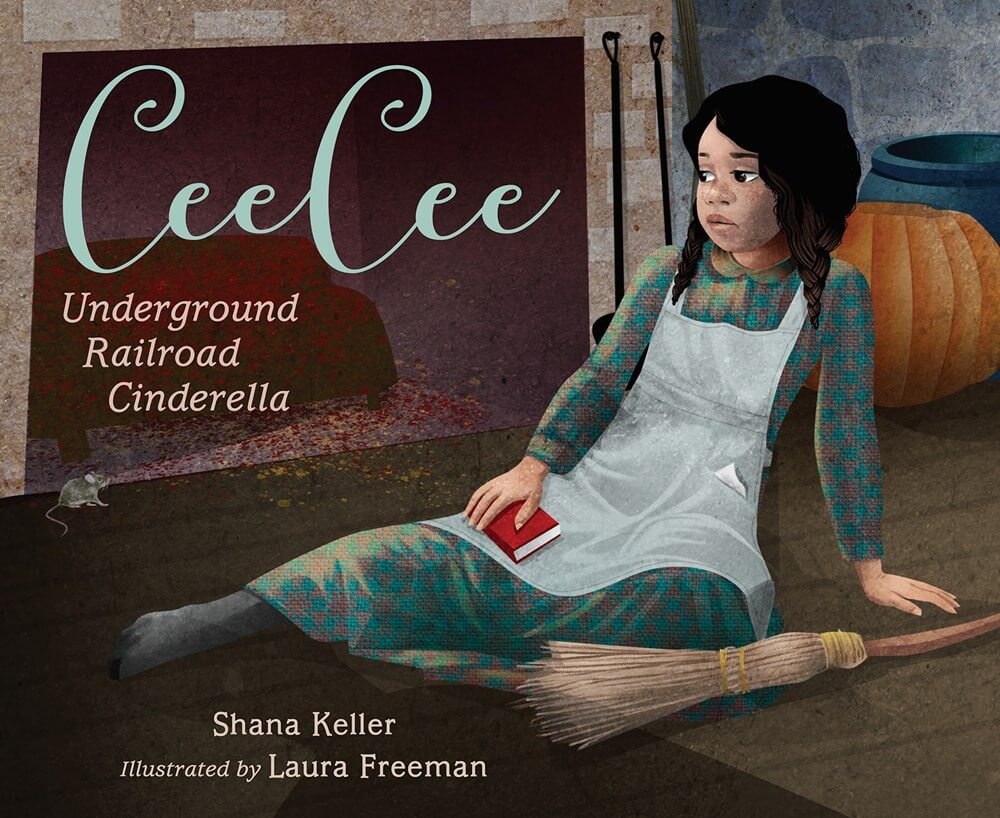Shana Keller brilliantly adapts a classic fairy tale in CeeCee: Underground Railroad Cinderella. In this compelling picture book about an enslaved girl in Maryland named CeeCee, Keller’s prose flows so well that it feels like a history-worn tale itself. Early on, for instance, readers learn: “It’s possible that CeeCee might have forgotten her real name over time. But her mother had written it down on a scrap of paper before she left. It was a secret CeeCee kept close to her heart.”
After being separated from her mother, CeeCee is forced to wait on two entitled sisters of a plantation family. Those girls are able to enjoy learning, fun and scrumptious pastries while CeeCee does all the work and is sent to the attic at night as punishment whenever she doesn’t “behave.” From there, she gazes at the North Star, yearning for education and freedom. The family cook, an enslaved woman named Binty, serves up kindness and hope while telling CeeCee about the Underground Railroad and the Biblical figure of Moses. After listening to the sisters reading Cinderella, CeeCee’s dreams merge the two stories, as she envisions both Moses and an African prince. Eventually, Binty, acting as CeeCee’s fairy godmother, helps CeeCee escape, telling her to meet Moses by the river at midnight.
Young readers will be enthralled with Keller’s storytelling, while Freeman’s illustrations seamlessly blend the historical realities of slavery on Maryland’s Eastern Shore plantations with CeeCee’s fairy-tale dreams. The artwork contrasts wealthy plantation life—the white girls’ bright dresses, a fancy tea set and candelabra—with the darkness of the rough-hewn attic and the plainness of Binty’s kitchen to great effect, highlighting the injustice and exploitation underlying these pristine settings. CeeCee secretly uses beautiful scraps from the sisters’ sewing to create her own luxurious escape outfit in a meaningful twist on Cinderella’s ball gown. And as CeeCee runs into the deep dark woods on Binty’s appointed night, Freeman’s dark and stylized illustrations of leaves strikingly complement the reddish tones of CeeCee’s dress, achieving a foreboding yet hopeful tone.
The best surprise of all, which provides a nice twist on Prince Charming, awaits down by the river. Although this ending feels a bit abrupt, it nicely harkens back to the beginning of the book. CeeCee is an excellent, exciting and informative intersection of fairy tale and—as back matter further illuminates—real history.
